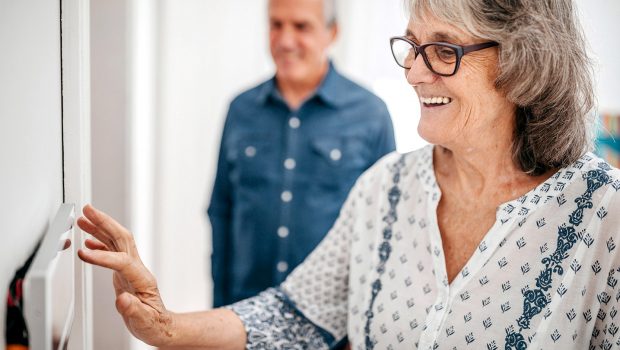Technology, affordability, desirability key to attracting next generation of senior living residents – News
(Credit: Pekic / Getty Images)
ATLANTA — The pandemic influenced and supported a desire among older adults to age in place rather than move into seniors housing. Now, according to experts, the industry needs to proactively respond by focusing on technology, affordability and desirability.
Speaking Monday at the LeadingAge Annual Meeting + Expo, SFCS Architects Managing Principal Melissa Pritchard and President Timothy Mueller pointed to research from Louise Aronson, M.D., a geriatrician from the University of California, San Francisco, that demonstrated that senior living needs to fully optimize its support for the aging process.
Aronson’s research found that the pandemic amplified the points that ageism is alive and well, that nonmedical congregate settings aren’t ideal, that aging in place offers safety and freedom, and that older adults can and will use technology.
“We all need to recognize we are all older people in training and think about what we would want to do differently when we think about senior living for ourselves,” Pritchard said. “History suggests that major crises — such as wars, natural disasters and pandemics — can serve as a tipping point for proactive, collective action.”
Technology is expected
Technology is a part of daily life in a digital society, but senior living communities were unprepared with technology platforms or integrated networks when the pandemic hit and the need and desire for technology skyrocketed, Pritchard said.
The solution, she said, is to make senior living homes smart and healthy.
“Environment is the single biggest determinant of health,” Pritchard said, adding that the pandemic put a spotlight on how environments affect wellness or illness. “People are willing to pay more for smart and healthy environments,” she said.
Pritchard said that communities need to incorporate technology into the daily lives of residents because it’s both desired and expected. What used to be conveniences, such as food delivery and online shopping and entertainment, are now considered necessities. And they aren’t going back to being conveniences, she said.
Middle-market housing needed
The pandemic also amplified the need and demand for affordable and middle-market seniors housing, Pritchard said.
The financial hit from the pandemic left many older Americans saying that they will have to delay their retirements. Life for those with middle-market incomes, she said, is unpredictable, precarious and fraught with feelings of anxiety and uncertainty.
The industry, she said, must create affordable housing that is accessible to older adults, along with providing quality care.
The challenge, Mueller said, is that the next generation of senior living residents wants a personalized and customizable living experience. But the existence of that desire creates an opportunity for the industry to create unique and diverse living options that appeal to current and future generations, he said.
Incorporating what is important for the next generation of residents — wellness, diverse dining, socially dynamic experiences, a redefined residence — while keeping costs down might involve integrating with the larger community, Mueller said. One community, for instance, he said, has incorporated a public library into the building, one mixed-use senior housing development was designed and built around a theater, and another mixed-use development serves both older adults and the general population.
“You need to think about how to make it better than home,” Mueller said, adding that that includes customizable options, choices and connectedness.
Competition is coming
The senior living industry has some real competition coming, Pritchard said.
The future, she said, includes a blend of technology, affordability and desirability, with non-senior living competitors entering the market.
For instance, UpsideHoM, an active living retirement operator; co-living startup Ollie; and co-living company Home Sweet Home Share House have models that provide on-demand, hotel-like services. And most of the models incorporate technology, including a single app that allows individuals to connect to all of the services and amenities.
“The intent is to compete with senior living in a very different way,” Pritchard said. “It has the aspirational appeal of discovery, wellness, sustainability and inclusiveness — many things we want to be meeting ourselves.”
Senior living, Mueller said, must embrace change and listen to customers. Staying the course, he said, is like navigating a new world with an old map. Although senior living is selling a continuum of care, older adults are saying they want independent living with the ability to add services and supports as needed — including end-of-life care — without leaving their homes.








Gloss